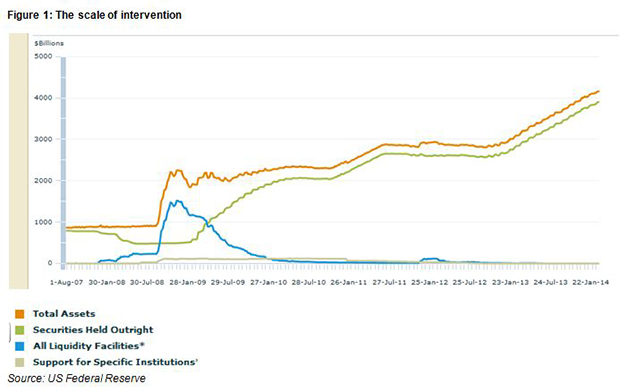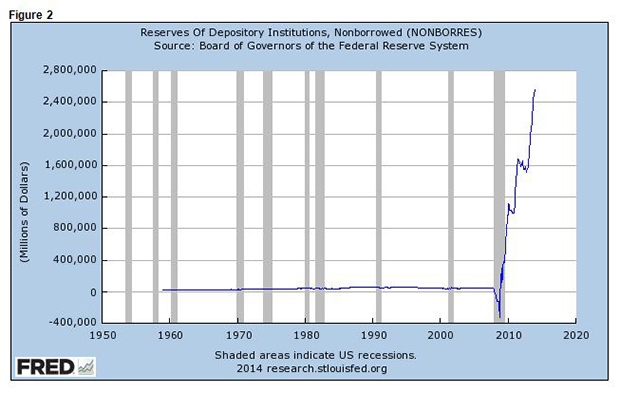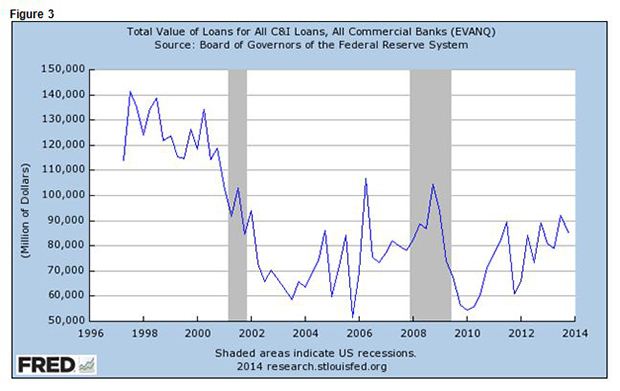By Brian Kantor and David Holland
Why it is good economic news even though the new darling of the left, Thomas Piketty, thinks that high returns on capital raise income inequalities and thus should not be encouraged.
A success story – improved returns on capital realised by JSE listed companies
If a company can generate a return on capital that beats the opportunity cost of the capital it employs, it will create shareholder value. The market will reward the successful company with a value that exceeds the cash invested in the company.
The inflation-adjusted cash flow return on operating assets, CFROI®, for listed South African firms has improved consistently and impressively since the 1990s. Using CFROI® we have been able to demonstrate that political freedom has proved fruitful for SA businesses and their shareholders.
The economic return on capital has improved spectacularly over time, with today’s median firm reporting a very healthy CFROI of 10%. Until 1994, the average South African company was sporting a CFROI at or below the global average of 6%. South African companies were generally destroying shareholder value before 1994, especially when considering how much higher the real cost of capital would have been in those highly uncertain times.
Since 1994, the median CFROI has sloped upwards and remained above 6%. The new South Africa has been a value-creating South Africa! Note that at the peak of the commodity super cycle in 2007-8, the median CFROI was a stunning 12%. The top and bottom quintiles have also sloped upwards, indicating greater value creation for the best firms and less value destruction for the worst firms. Presently, 20% of South African firms are generating economic returns on capital above 15%, which is world-class profitability.
The benefits of efficient business and excellent returns on capital can be widely shared in inclusive share ownership, through pension and retirement plans as well as perhaps via a sovereign shareholding fund that can be built up to fund genuine poverty relief and opportunities for the poor. Broad-based empowerment in the form of employee- and community-based share options can be used to turn outsiders into insiders.
Such attempts to broaden the ownership of productive capital perhaps accord well with the recently revived critics of capitalism, following Piketty, who have found new reasons to question the advantages to society of high returns on capital. It is argued that such high returns on capital may well increase inequalities of income because they go mainly to the wealthy. Even should such high returns raise the rate at which national income is increasing, it makes such outcomes a mixed blessing, especially for those who have come to regard income equality as an important goal of economic policy.
Some facts about the distribution of SA incomes, taxes and government expenditure.
Let us give a South African nuance to this debate. Any discussion of the causes and consequences of economic growth and the distribution of benefits always has a distinctly racial bias in that white South Africans, on average, enjoy significantly higher incomes than black South Africans.
The distribution of wealth in South Africa is even more unevenly distributed in favour of white South Africans, given the much higher past incomes and the savings realised from them. The middle and higher income classes, those who are likely to become important sources of savings and contributors to pension and other funds, are increasingly made up of black South Africans. The times are changing and dramatically so, Loane Sharp, labour market analyst writing for Adcorp, indicates:
“Changes in the labour market after the end of apartheid have worked spectacularly well for blacks. Since 1995, on a like-for-like basis adjusting for skills, qualifications and work experience, blacks’ wages have been rising at 15% per annum whereas whites’ wages have been rising at just 4% per annum. Average wages for blacks and whites should converge as early as 2021 though, admittedly, average wages for entire race groups belie vast variations between individuals. The number of high-earning blacks – that is, those earning more than the average white – has increased from 180,000 in 2000 to 1.5 million today, with more than 40% of these employed in the public service, which has been used to great advantage, much like the predecessor apartheid state, to promote the welfare of a particular racial group.” (Source: Adcorp Employment Survey.)
According to the UCT Unilever Institute, the black middle class went from 1.7 million in 2004 to 4.2 million in 2012 to 5.4 million in 2014. The white middle class has been roughly stagnant: 2.8 million in 2004 to 3.0 million in 2014 (Source: UCT Unilever Institute). The number of high-earning blacks (i.e. those earning more than the average white) went from 120,000 in 2001 to 1.9 million in 2014 – 77% of these were in the private sector (Source: Adcorp).
The income differences within the different racial groups have probably widened with the rapid growth in the black middle class and the transformation of the public service that now provides much less protection for low-skilled whites. Most important, the unemployment rates indicate that a regrettably low percentage of the potential black labour force is not working in the formal sector and therefore not earning or reporting any income.
The income statistics and the GINI coefficient that measures income inequalities in SA do not indicate the important role the SA government plays in ameliorating poverty and therefore supporting consumption expenditure. The distribution of expenditure, including the benefits of expenditure by government agencies, especially if divided by racial categories, will look very different to the distribution of income or wealth. Of all government expenditure, equivalent to 33% of GDP, some 60% is classified as social services, that is spending by government on health, education and protection services. Much of these budgets are allocated to the improved employment benefits of the black middle class who work for government, supplying so-called social services. But measuring the quality of delivery is much more difficult than measuring how much is spent on them.
Yet of this expenditure on welfare, spending that constitutes 60% of all government expenditure, some 15% or nearly 5% of GDP, consists of cash supplied on a means tested basis to the identified poor. That is cash paid monthly as old age pensions, child support grants or disability grants. These payments have been growing strongly over the years, keeping up fully with inflation, and have provided an important form of poverty relief.
The taxpayers who have paid for this relief (and other government expenditure) are to an important degree income tax payers. Of all government revenues, which amount to about 30% of GDP, some 55% come from taxes on income and profits of businesses. Registered companies are budgeted to contribute nearly 35% of these income and profit taxes, or nearly 20% of all government revenue, in this financial year 2014-15. Of the personal income taxpayers, the highest income earners, those expected to earn over R750,000, will pay over 40% of all the income tax collected, while earning about 24% of all personal incomes – which include all reported income, interest, dividends and rents generated from assets.
These relatively high income earners constitute only 4.6% of all the 15.254 million potential income tax payers on the books of the SA Revenue Service (SARS). Of these registered for income tax purposes, some 8.835 million will fall below the income tax threshold of R70,000 income per annum and so will not contribute income tax. These low income earners will generate only 11.5% of all expected reported incomes in fiscal year 2014/15. (Source: Budget Review 2014, National Treasury, Republic of South Africa, Table 4.2).
These statistics from SARS confirm how unevenly distributed income is in South Africa and also how much redistribution of income is taking place via income taxes as well as via the distribution of government expenditure, which is biased in favour of the poor.
Higher income South Africans, it should be recognised, will be consuming and paying for almost exclusively private education, health care and will also employ privately supplied security services. The relationship between taxes paid and benefits received is not at all as balanced as it may be in the developed world where the biases in spending are often in favour of the middle class, who make up a large proportion of the electorate. To stay competitive in the global market for skills, this relatively unfavourable balance of taxes paid for benefits received by the high income earners and income tax payers has to be made up in the form of higher pre-tax salaries – purchasing power adjusted – compared to employment benefits and government services available for scarce skills in the developed world.
The scope for raising income or wealth tax rates would seem very limited – given the mobility of skilled South Africans and their capital. Higher tax rates, at some point, would inevitably mean lower tax revenues. The government appears well aware of this trade off, given that the Budget plan for the next three years is to maintain hitherto very stable ratios to GDP of government expenditure (33%) and government revenues (30%). Clearly the limits to government expenditure and redistribution of incomes will be set by the rate of economic growth. Redistribution with growth, to which efficient use of capital will play an important part, would seem the only realistic option.
Economic reality means tradeoffs, not least for economic policy
That growth in SA historically has occurred unfairly, with unusual degrees of income and wealth differences, is a fact of economic life that even SA governments, whose best intention is to reduce income and wealth inequalities, would have to take account of. Policies designed to achieve greater equality of economic outcomes may restrict growth rates and thus growth in government revenues that support redistribution of income and wealth. These are developments that would make achieving a greater degree of equality of economic outcomes and (what is not the same thing at all) realising less absolute poverty, that much harder to achieve.
South Africans have only to look north to Zimbabwe to recognise how the aggressive redistribution of wealth (without compensation) can destroy wealth creation and economic growth. While perhaps achieving greater equality it has also resulted in significantly greater poverty.
The consequences of income redistribution and transformation in SA: more consumption spending and lower savings.
The transformation of the income levels and prospects of the black middle class in SA as well as the income and welfare support provided for poor South Africans has had the effect of raising consumption spending as a share of GDP and reducing the gross savings rate. Gross savings, of which more than 100% are now made by the corporate sector from cash retained and invested by them, have fallen from around 25% of GDP in the early 1980s to current levels of about 14%. Fortunately the rate of capital formation, encouraged by high returns on capital has held up much better to the advantage of economic growth and tax revenues.
But the difference between domestic capital formation and savings has to be made up by infusions of foreign capital. By definition the difference between national gross savings and capital formation is the current account deficit on the balance of payments (see below).


South Africans have had to rely on foreign capital to an important degree, in order to maintain their consumption expenditure, much influenced as it has been by the transformation of the economy, in the form of the rise of the new middle class and the redistribution of income and government expenditure towards the poor. Foreign investors, essentially attracted by high returns, have become very important shareholders in JSE-listed corporations and rand-denominated government debt. Some 40% of SA government debt denominated in rands is now held by foreign investors. South Africans have been significant net sellers of SA equity and debt and foreigners net buyers over recent years.
Raising consumption expenditure rates has been no free lunch for South African wealth owners. They have had to gradually give up a share of their wealth and income from capital invested in JSE -listed companies, mostly held in the form of pension and retirement funds managed for them, to foreign share and debt holders. Of the current account deficit, which is running at about 6% of GDP, an increasing proportion, now equivalent to about half or 3% of GDP, is accounted for by net payments of interest and dividends abroad.
High returns on capital have made higher levels of real expenditure by lower income South Africans and previously disadvantaged black South Africans not only possible, but relatively painless for the wealthy share and debt holders who have gained directly from a rising share and debt market. The tax outcomes, and strongly rising government revenues, have not destroyed this growth process.
The implications for South Africa seem clear enough: to encourage economic growth so as to be able to redistribute more income and wealth to the poor. Any bias in favour of redistribution without growth would be destructive of wealth and incomes. Local and foreign investors, upon whom we depend to maintain our current levels of income and expenditure, don’t like uncertainty and much prefer transparency in government and corporate policy.
If global risk appetite is diminished, then shareholders in all countries will suffer. But those with the least uncertainty when it comes to corporate governance, government policy, inflation, and tax policy will be perceived as safe and suffer less. There are immense benefits to aligning policy with uncertainty reduction. A lower real cost of capital will increase market values, and make marginal investments more attractive. This fuels growth and reinvestment, which create more jobs and tax revenue. Typically, a 1% change in the cost of capital or required returns for investors means a 20% change in equity valuation! This is the old fashioned goal: less risk, more growth should be the aim of economic policy, rather than the chimera of enough income equality.
Pat on the back but much work needs to be done
South African companies should continue to focus on generating world beating returns on capital while government focuses on minimising uncertainty for them. In particular the government should remove the constraints on employment growth in South Africa and encourage labour intensive entrepreneurs to compete with the labour-shy formal business. More competitive labour markets (and the lower labour costs that would come with it) might allow smaller businesses, with less easy access to capital markets, to compete more effectively with formal business, if only they were allowed to do so.
Most important is that South Africans should recognise what should be obvious to all but the ideologically blind. When it comes to delivery, SA business has proved successful and our society should be building on this success. Business to business relationships in SA – subject to competitive forces – work well. By contrast, positive government to business relationships have been profoundly compromised and government delivery of services, despite an abundance of resources provided mostly by taxpayers, has been gravely inadequate.
If we can beat the world in managing businesses for return on capital, we can complete the job in building a South Africa where all prosper. South Africa is its own worst enemy by not according successful business enterprise the respect it deserves from policy makers.
The successes of business can be widely shared beyond current shareholders in the form of higher incomes and in revenues for the state, as well as increased employment. Growth with distribution is a worthy goal for policy and high returns on capital can contribute to this.
David Holland is Senior Adviser, HOLT and adviser to Credit Suisse. The views expressed are his own and not necessarily those of HOLT or Credit Suisse








